Steps to write a donation letter
- Understand your audience and tailor your appeals accordingly
- Remember that presentation matters
- Pay attention to format and design
- Use the appropriate salutation and a personalized greeting
- Include information about your organization and mission
- Explain the current project, priority, or need
- Share persuasive details about the project’s impact
- Make a specific request
- Add a clear call to action
- Express your gratitude
- Sign the letter
- Proofread and edit your letter before sending it out
Of all the things on your to-do list as a nonprofit professional, attracting donors and raising money to support your organization’s cause are among the most important. And one of the best fundraising tools at your disposal is the tried-and-true donation letter.
In this post, we cover how to write a donation letter and which key components to include. Plus, we’ll share a few examples and templates for writing your own.
The importance of donation letters for nonprofit fundraising
Donation letters and fundraising appeals are obviously essential for soliciting support. Donation letters can also demonstrate your organization’s impact, strengthen relationships with existing donors, build relationships with new ones, raise awareness about your cause, and build trust with donors by showing how their gifts make a difference.
An effective donation letter includes the following key components:
- Your organization’s letterhead or branded email template
- A personalized greeting
- Information about your organization and mission
- The current project, priority, or need that you are seeking to fund
- Specific details about the impact the donation will have
- Your specific request from the donor
- A call to action
- An expression of thanks
Read on for more information on each of these elements in our step-by-step guide on how to write a donation letter.
A step-by-step guide to writing a donation letter
Now that you know the key components to include in your donation letter, let’s look at each element in more detail and go through the steps of writing an effective donation letter.
1. Understand your audience and tailor your appeals accordingly. To ensure you’re writing the most effective donation letters, be sure to customize your fundraising appeals to specific groups of donors rather than sending a donation letter to everyone in your database. You can segment based on donor history, gift amount, recent and frequent gifts, donor age range, and donor type (i.e., annual or cause givers), to name a few categories.
2. Remember that presentation matters. Send donation letters on your organization’s letterhead if you’re mailing a physical letter, or use a branded email template if you’re sending emails. You may also want to include information about your nonprofit’s tax-deductible status and your employer identification number (EIN), as some donors will need this information for tax purposes.
3. Pay attention to format and design. You also want to ensure that your letter uses fonts and colors that are easy to read and in line with your organization’s branding. You can also use images and other visuals to help tell the story of your nonprofit’s mission, impact, and progress, if applicable.
4. Use the appropriate salutation and a personalized greeting. Address each of your donors by their preferred name and include a friendly personalized greeting. People are more likely to ignore letters that don’t include a name or are addressed to “Dear Donor.”
5. Include information about your organization and mission. Share a brief overview of your nonprofit’s overall mission and purpose, as well as the goals you hope to achieve, to give the donor context for the specific request you’re making. Include facts or statistics about your organization’s impact in the community and/or share a story of someone who benefited from your organization’s support. This helps the donor see the direct connection between their gift and its effect in the wider community.
6. Explain the current project, priority, or need. While there may be times when you’re raising funds for operations and general expenses, a donation request letter is most compelling when it’s geared to a specific project, priority, or need. In this section of the donation letter, explain the specific project or need you’re seeking funds to support.
7. Share persuasive details about the project’s impact. These should help you explain why you’re asking for support. Describe the project or need and how funding for it will positively impact the community. Explain exactly how the donor’s contribution will make a difference and why this program is so important. Communicate a sense of urgency to help them understand why they should take action now.
8. Make a specific request. A donation letter isn’t the way to make generic requests. Ask for a specific amount, but also share how grateful your organization will be for any support. For example, an environmental organization could say, “Your donation of $50 will support one day of waterway cleanup and help us buy the necessary supplies,” or a nonprofit that helps support school-age children could suggest, “Your $25 donation will provide school supplies for one local student in need.”
9. Add a clear call to action. Finish your letter with specific next steps you’d like the potential donor to take. If you’re sending a physical letter, provide instructions on how to make a donation (e.g. where to send a check). For an email, you can simply include a link to the appropriate donation page on your website. You want to make this step as effortless as possible, so provide several ways for them to give, and be sure to provide clear instructions for each.
10. Express your gratitude. End the communication by thanking your donor for their time and attention. Thank them for helping your organization reach its fundraising goal, for the support they’ve provided in the past, or for the current donation they’re considering.
11. Sign the letter. Don’t forget to include your contact information.
12. And finally, proofread and edit your letter before sending it out. This step ties directly to the goal of making a great first impression on your donors.
Examples of successful donation letters
Before you write your own donation letter or fundraising appeal, it might be helpful to study examples of real donation letters that have gotten results for their organizations. We’ve rounded up a few examples of successful donation letters here.
Check out 10 letters that raised funds for nonprofit organizations, including a letter that got a 100 percent response, the well-known United Negro College Fund letter, and a successful United Nations fundraising letter, among others.
To get the behind-the-scenes story of one of the most successful fundraising letters ever written (and see the letter itself), check out the story of the Sea Turtle Rescue Fund letter Richard Armstrong wrote for the Center for Environmental Education.
If you’re looking for templates, you’ll find several donation letter templates here, including a standard donation request letter, sponsorship request letter, peer-to-peer campaign letters, and more. And for even more ideas, check out 14 different kinds of fundraising letter templates here.
Donation and fundraising resources from Jotform
Jotform offers a robust selection of easy-to-use, no-code donation and fundraising tools to help your nonprofit organization raise money, including free donation forms and donation apps. With the Donation Box feature in Jotform Apps, you can collect donations through over 30 payment gateway integrations, display a fundraising goal progress bar, and customize donation amounts.
You can also use our customizable donation request letter template to make donor requests. You can fill in the fields with details about the recipient, your organization, the project that needs funding, and accepted donation methods. Share the letter with potential donors via email, and they’ll be able to e-sign it from any device using Jotform Sign.
And because we believe in supporting those who make a difference, Jotform also offers a 50 percent discount to nonprofits on our paid plans.
Learn more about creating professional-looking forms with our nonprofit forms and templates, read about how to start a nonprofit, learn how to run a successful nonprofit fundraising campaign.
When it comes to requesting — and receiving — donations to support your organization’s good work in the community, Jotform wants you to have every resource you need at your fingertips. By following the donation letter tips here, you should be well on your way to a successful fundraising campaign.
Photo by Gustavo Fring










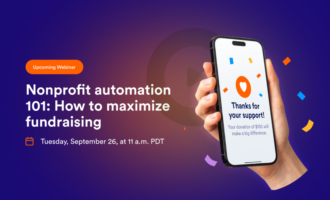
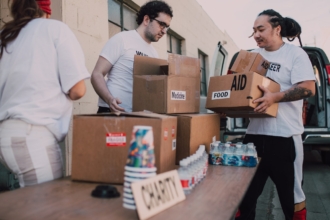

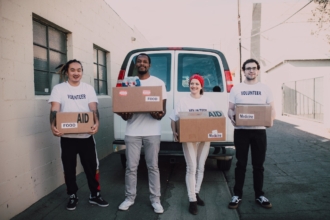





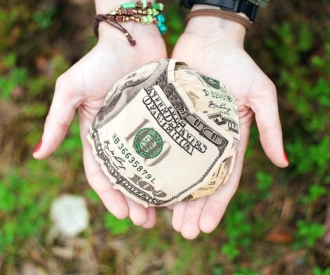


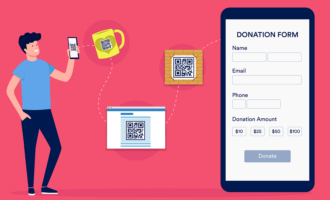

Send Comment: